Rehabilitation after rhinoplasty: features by day, photo before and after
Those who want to do rhinoplasty, are often interested in how the rehabilitation period is going on? Before carrying out such an operation it is worthwhile to clarify what complications can be, how long does the edema disappear and how to accelerate the process of recovery? 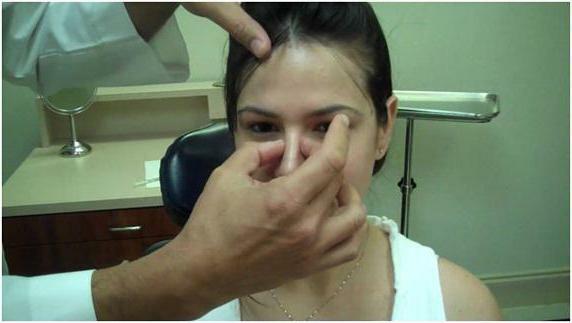
Possible complications of
Rehabilitation after rhinoplasty is carried out in several stages. Complications after such a surgical intervention are extremely rare, since the mechanism of the operation has long been improved and well-developed. In this case, the patient statistics are positive. The risk of developing some complications is significantly reduced.
The most terrible consequence of rhinoplasty is a lethal outcome. Most often, death occurs as a result of anaphylactic shock, which occurs only in 0.016% of cases. Of these, only 10% result in death.
Other types of complications can be divided into internal and aesthetic. To avoid unpleasant consequences, rehabilitation after rhinoplasty is required.
Aesthetic complications of
Among the aesthetic complications it is worth highlighting:
- seam divergence;
- appearance of adhesions and scars;
- upturned tip of the nose;
- beak-shaped deformation;
- occurrence of vascular networks;
- increase pigmentation of the skin.
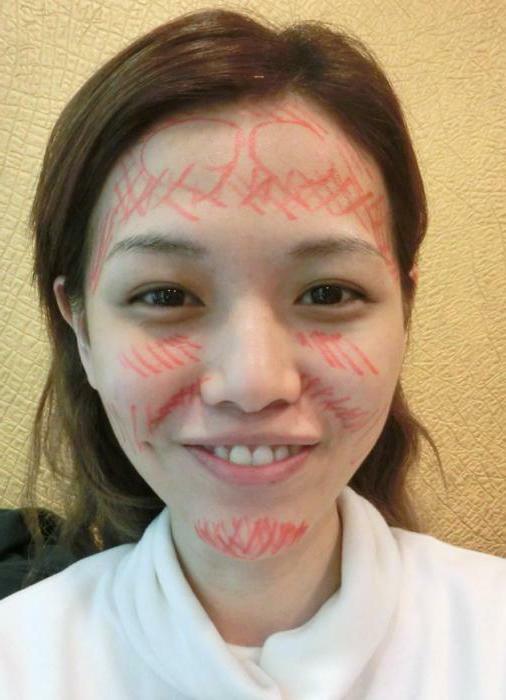
Internal complications of
Internal complications are much more than aesthetic. In addition, such consequences represent a great danger to the body. Among internal complications it is necessary to allocate:
- infection;
- allergy;
- shortness of breath due to the shape of the nose;
- atrophy of nasal cartilage;
- osteotomy;
- toxic shock;
- tissue necrosis;
- perforation;
- impaired sense of smell.
To avoid such complications during the rehabilitation after rhinoplasty, you should undergo a thorough examination before surgery.
Side effects of rhinoplasty
During the rehabilitation period after rhinoplasty, side effects may occur. The patient should be warned about possible risks. In the first weeks after the operation may manifest:
- increased fatigue and weakness;
- nausea;
- numbness of the nose or its tip;
- severe nasal congestion;
- bruises around the eyes are dark blue or burgundy;
- increased body temperature;
- bleeding from the nose, blocked with swabs.
Each surgical intervention is individual. The method of conducting it depends not only on the experience of the doctor, but also on the general condition of the patient. 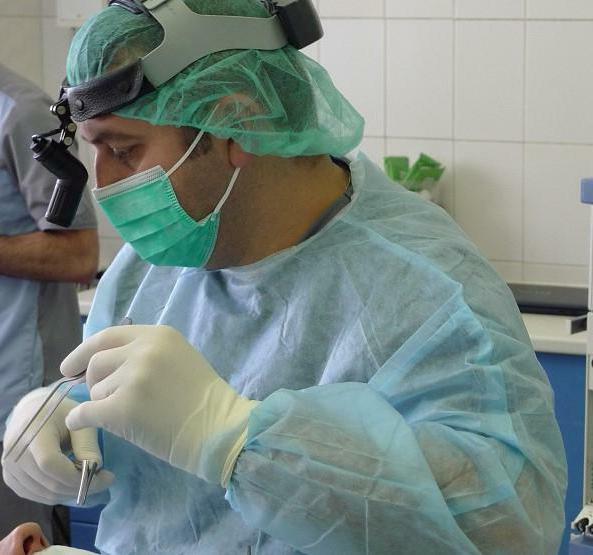
Rehabilitation after rhinoplasty
Reviews and photos of patients after surgery prove that rehabilitation often takes place without complications. It is extremely rare to be in a hospital under the supervision of specialists. A day later, the patient himself or with someone's help can take a bath or just wash his head. The main thing is to observe all the rules. First of all, it concerns the tire. It should always be dry. It is forbidden to wet it.
Rehabilitation after rhinoplasty, reviews about which are mostly positive, does not last long. The whole period can be conditionally divided into 4 stages.
Stage one
How does rehabilitation after rhinoplasty work by days? The first stage, as shown by patients' reviews, is considered the most unpleasant. It lasts approximately 7 days, if the operation has gone without complications. During this period, the patient is forced to wear a bandage on his face or a plaster cast. Because of this, not only does the appearance look bad, but there is a lot of inconvenience.
In the first two days a patient may experience pain. The second drawback of this period is edema and a feeling of discomfort. If an astrometry was performed to the patient, the appearance of bruising and reddening of the eye protein due to bursting small vessels is likely.
At this stage of rehabilitation it is very cautious to carry out any manipulations with nasal passages. It is worth considering that all the discharge from the nostrils must be removed. 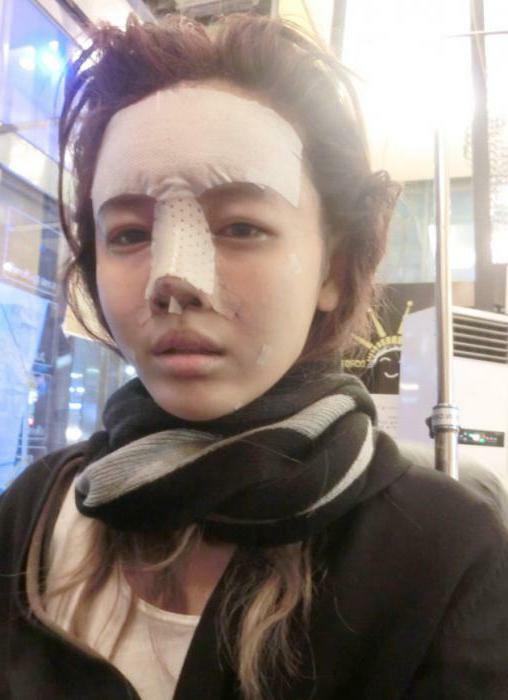
Phase Two
During the rehabilitation period after rhinoplasty, the mucous membrane and other soft tissues of the nose are restored. The second stage lasts about 10 days. At this time, the patient is removed a plaster or bandage, as well as internal splints. All major stitches are removed if non-absorbable threads are used. In the end, the specialist clears the nasal passages from accumulated clots, checks the condition and shape.
It is worth considering that after removing the bandage or gypsum, the external appearance will not be quite attractive. Do not be scared. Over time, the shape of the nose will fully recover, and swelling will disappear. At this stage, the patient can return to the usual lifestyle and even go to work if the operation has gone without complications.
Edema and bruises will initially drop very little. Completely they disappear only three weeks after rhinoplasty. Much depends on the work done, the mechanism of the operation and the properties of the skin. Puffiness may reach 50% by the end of this period.
Stage Three
How long does this rehabilitation period last after rhinoplasty? The body is restored after the operation gradually. The third stage can last from 4 to 12 weeks. Restoration of the tissues of the nose at this time proceeds faster:
- completely disappears puffiness;
- restores the shape of the nose;
- bruises disappear;
- completely cleans all seams and heals those places where they were applied.
It should be noted that at this stage the result is not yet final. The nostrils and tip of the nose recover and take the desired shape longer than the rest of the nose. Therefore, do not critically evaluate the result. 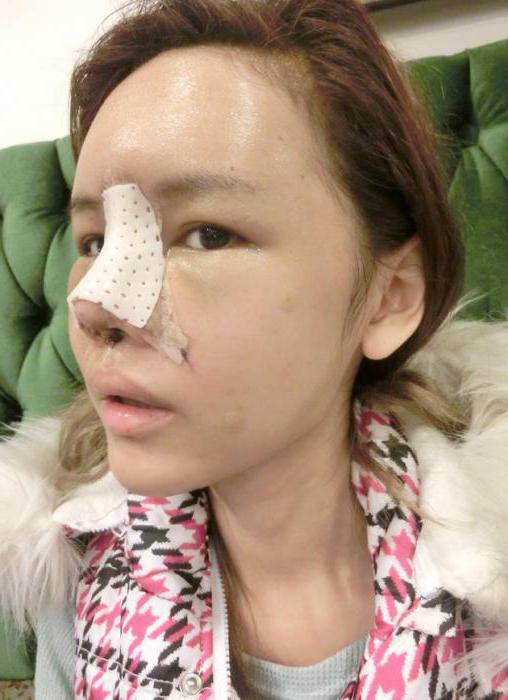
Stage Four
This rehabilitation period lasts approximately a year. During this time, the nose takes the necessary shape and shape. Appearance during this time can greatly change. Some roughness and roughness can completely go away or manifest even more. The latter variant often arises as a result of asymmetry.
At the end of this stage, the patient can discuss with the doctor a re-operation. The possibility of it depends on the state of health and the result.
What is not possible during rehabilitation
What is the result of the rehabilitation after rhinoplasty? The photo allows to evaluate the external state of patients after the operation and the final result. That there were no problems, the doctor should tell in detail, that it is possible, and that it is impossible during rehabilitation. Patients are forbidden:
- to visit the pool and swim in the reservoirs;
- to sleep, lying on one side or on the back;
- to wear for 3 months after surgery glasses. If it is necessary, then for the time of rehabilitation it is worth replacing them with lenses. Otherwise, the frame deforms the nose;
- lifting weights;
- take a hot or cold shower / bath;
- to visit the sauna and bath;
- take long sunbathing and sunbathing for 2 months after the operation;
- to drink alcoholic and carbonated drinks.
In addition to the above, the patient during the rehabilitation period should take care of himself from the diseases, as the immunity at this time is greatly reduced. Any ailment can cause a complication or lead to infection of tissues. It is not recommended to sneeze often, since the respiratory organ during the rehabilitation period is held by threads. Even a small sneeze can cause deformation. 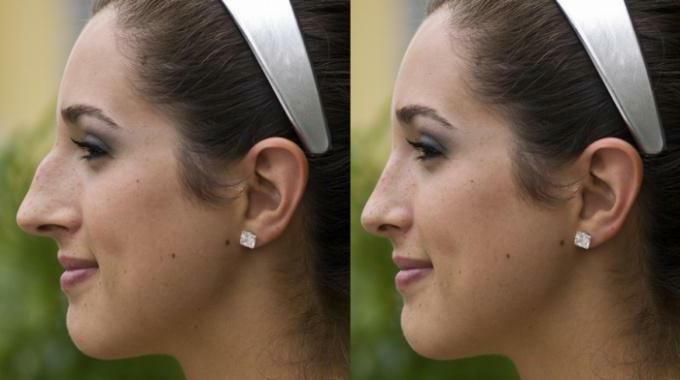
Refuse alcohol
Rehabilitation after rhinoplasty of the nose is a difficult period. For a month, the use of alcoholic beverages is strictly prohibited. Alcohol can cause complications and lead to sad consequences. It is worth considering that alcoholic drinks:
- increase swelling;
- worsens metabolic processes, as well as removal of decay products;
- are not compatible with certain drugs prescribed by the attending physician;
- significantly impair coordination of movements.
This alcohol, like cognac and wine, can be consumed in a month. Drinks should be non-carbonated. However, they should not be abused. As for carbonated beverages, they should be discarded. These include not only cocktails, but also champagne and beer. They can be used only six months after rhinoplasty.
Medications after rhinoplasty
During the rehabilitation after rhinoplasty of the tip of the nose or nasal septums, medication is required. They are appointed by the doctor who performed the surgical procedure. In this case, the dosage is selected individually in each case. Without fail, patients are prescribed anti-inflammatory drugs and antibiotics, as well as painkillers. The first are accepted up to 2 times a day according to the rate during the recovery period. As for anesthetics, they are recommended to drink depending on the sensations for 4 to 10 days.
For the elimination of edema during the rehabilitation period, the doctor can prescribe injections. The main drug used after rhinoplasty, "Diprospan."It is worth considering that such injections are unpleasant in themselves. During the procedure, pain may occur. You can also use a patch after surgery. But it is worth considering that after it is removed, there may be an influx of swelling.
Physiotherapy and massage
To accelerate the healing of scars, as well as to prevent the growth of bone tissue, special massage and physiotherapy are prescribed. Such procedures are recommended to be carried out regularly. Massage can be done alone:
- slightly press the tip of the nose with two fingers for 30 seconds;
- release, and then repeat, placing the fingers slightly higher;
- massage up to 15 times a day.
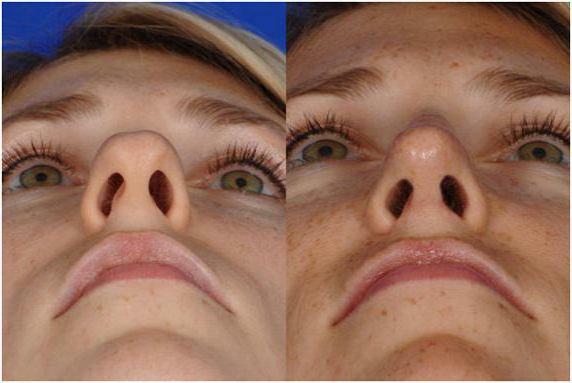
Sport activities
A month after the rhinoplasty is allowed to start playing sports. In this case, the body should be given minimal loads. During rehabilitation, the best sports are yoga, fitness, and cycling.
Three months after surgery, the load can be increased. However, those sports where a significant muscle tension is required is prohibited. For half a year, it is worth avoiding classes where there is a risk of being struck in the nose. Such sports include handball, martial arts, boxing, football and so on.
In conclusion,
Rhinoplasty has its own characteristics. Before carrying out such a complex operation, it is worthwhile to undergo a thorough examination and consult with a doctor. In most cases, rhinoplasty passes without complications. However, compliance with all rules and restrictions is important for the patient. In addition, it will take leave from work, at least for a week.
To conduct rhinoplasty is recommended only if there are serious reasons. The choice of a specialist and a polyclinic should be approached with special responsibility. This will avoid negative experiences.
